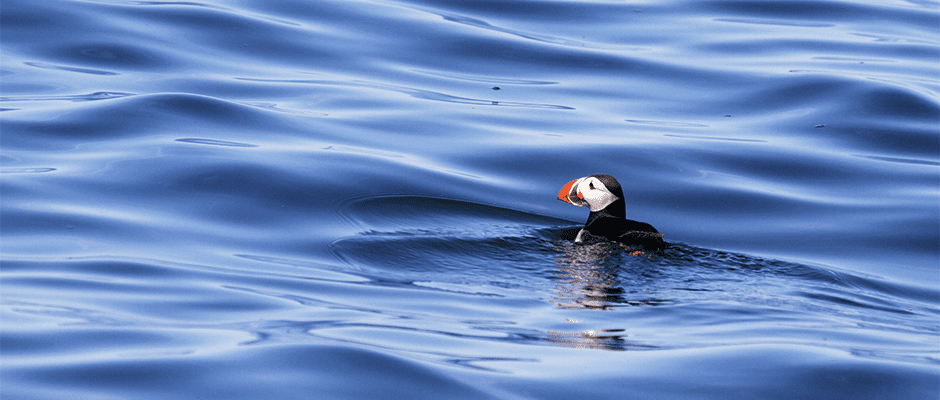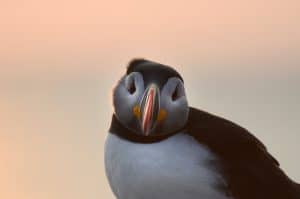Share this article
Puffins with longer migrations have trouble breeding
With their bright beaks and crescent-shaped eyes, puffins are adored by animal lovers, but the pint-sized seabirds have been something of a mystery to scientists. GPS trackers have been too heavy to attach to their tiny bodies, making it hard for biologists to monitor their flights and know where these declining birds head for the winter.
Using hi-tech geolocators weighing less than two grams, an international team finally tracked puffin migration across their North Atlantic range, allowing them to pinpoint hotspots for conservation. They discovered that puffins migrating farther didn’t breed as well as those traveling shorter distances.
“We found a direct link between migration in the winter and breeding success,” said Annette Fayet, first author on the study published in Current Biology. “That’s important because it shows you have to look at the whole picture — the whole year — for the conservation of migratory species.”
In recent decades, Atlantic puffins (Fratercula arctica) have dwindled as much as 70 percent from what used to be millions of breeding pairs, especially in Iceland and Norway, where their largest populations nest. They’re endangered in Europe and vulnerable in North America, according to the International Union for the Conservation of Nature.
To uncover and alleviate potential threats to Atlantic puffins during their migration, Fayet, a research fellow at the University of Oxford, and her collaborators observed 13 of their populations between 2007 and 2015. They looked at where the seabirds went over the winter from their breeding islands in Wales, Scotland, Ireland, Norway, Iceland, Newfoundland, the Bay of Fundy and Maine. The researchers attached state-of-the-art lightweight trackers to 270 birds at their burrows and returned to the same nests in the following summers to retrieve the location and saltwater immersion data on the devices. This information helped them estimate the puffins’ daily migratory movements and behaviors.
“Populations vary widely in migratory strategies,” Fayet said. “American puffins stay within a few hundred kilometers of their colony throughout the winter. Birds in Iceland or Norway migrate over 1,000 kilometers. Welsh puffins go to Newfoundland but also to the Mediterranean.”
Wintering puffins relied heavily on two regions — the opening of the Labrador Sea between Greenland and Newfoundland and the Charlie Gibbs Fracture Zone south of Greenland and Iceland — possibly because they’re abundant in fish.
“What drives the migration of puffins is how good the habitat is around a colony in the winter and population size,” she said.
If resources in the breeding colony’s vicinity are scarce or the colony is large, the seabirds journey farther to escape competition and obtain food to sustain themselves through the winter, Fayet said.
“We found puffins from larger colonies where there’s more competition, who migrate farther and at higher latitudes, do less well breeding,” she said. “This may be because they have a more difficult, energy-demanding migration. When they come back to breed next spring, they might be in poorer condition, and this might decrease their chances to rear a chick.”
North American puffin colonies experience higher reproductive success than their bigger northern European counterparts, Fayet said, possibly because those in the United States and Canada face a less harsh winter, migrate shorter distances and expend fewer calories.
This research has informed a proposal for a new marine protected area in the middle of the North Atlantic to safeguard core wintering grounds for at-risk puffins and other seabirds within the next decade.
This summer, Fayet plans to investigate the foraging movements of puffins rearing chicks in Iceland and the United Kingdom to understand how the availability of fish during the breeding season might also affect the seabirds and further explain why populations are doing poorly.
“This will be another piece of the puzzle,” she said.
Header Image: A puffin swims off the coast of Maine. ©Steve Kress









